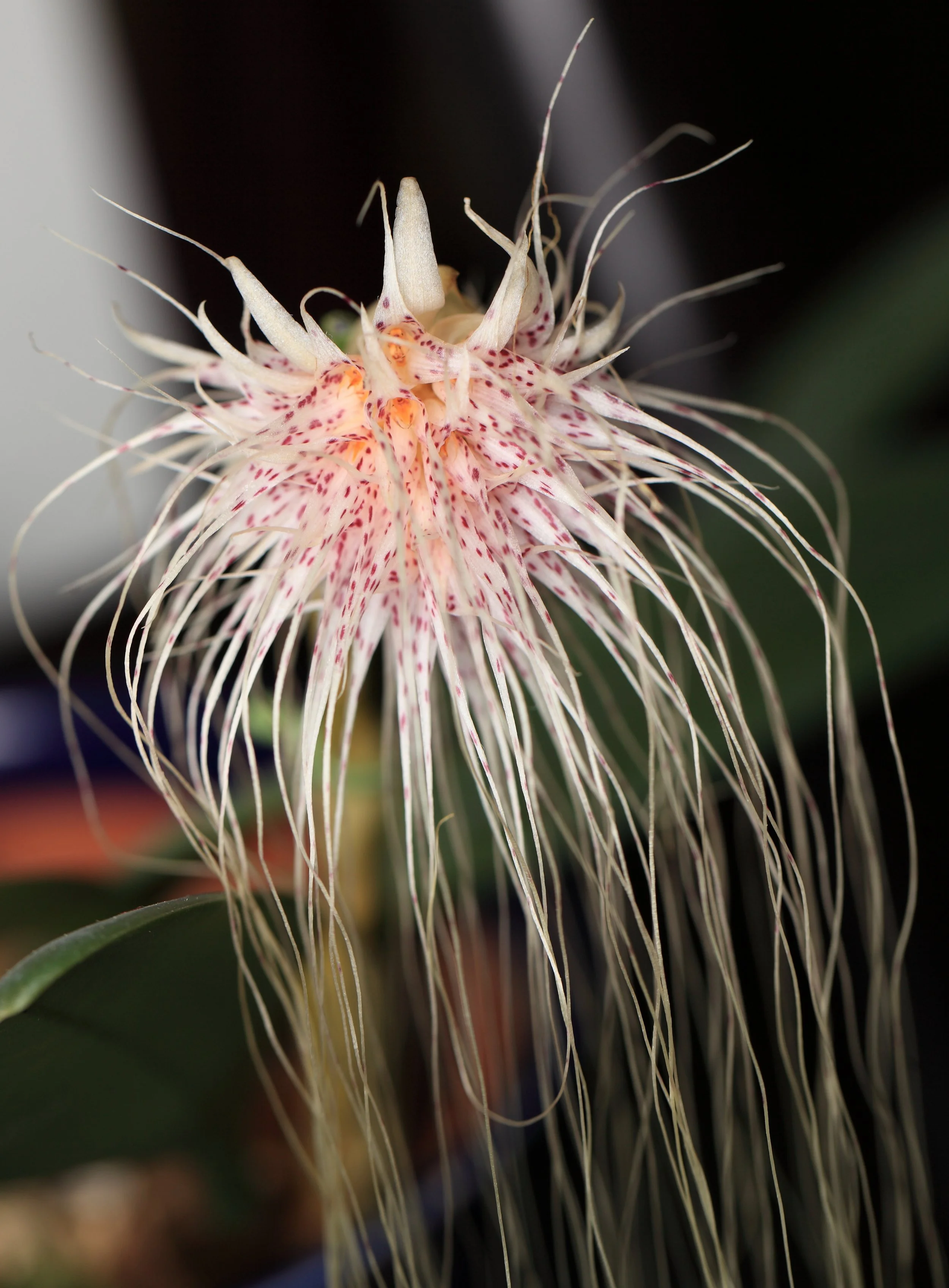This “Medusa” Orchid Won’t Turn You to Stone
Bulbophyllum medusae (photo credit: TANAKA Juuyoh via Pxhere, CC by 2.0)
Don’t worry about averting your eyes or only looking via reflection—you can stare directly at the medusa orchid, bulbophyllum medusae, without turning to stone. And you don’t even need a sword!
Bulbophyllum medusae close-up (photo credit: snotch, CC BY 2.0 via Wikimedia Commons)
This plant species is native to the tropics of Southeast Asia, including Sumatra, Malaysia, the Philippines, and Thailand. They grow in lowland rain forests—usually on trees, as they are epiphytes—and in mangrove swamps where they enjoy the humidity. Like Cattleya and oncidium orchids, they have pseudobulbs that store water and other nutrients. A single, flat leaf grows from each pseudobulb and during flowering season (usually autumn), it grows a spike from which a firework cluster of flowers emerges and dangle down like the Greek monster’s snaky hair.
Bulbophyllum medusae (photo credit: Motohiro Sunouchi, CC by 3.0 via Flickr)
Medusa orchids are available for sale (I’ve only seen them online—I’ve yet to see them at a nursery or orchid show) to home plant enthusiasts. Its ideal growing conditions are similar those for most other orchids: bright, indirect light, lots of humidity, consistent watering, good air circulation, and daytime temperatures between 75-85 degrees Fahrenheit. Similar to other orchids, medusa orchids prefer lower nighttime temperatures in the 60-degree range, particularly when it comes to inducing blooms. Medusa orchids prefer a potting medium similar to what phalaenopsis and other epiphytic orchids like, which is a mix of fast-draining orchid bark and humidity-retaining moss. They can grow in pots, baskets, or mounted on wood.
Bulbophyllum “lion king” (photo credit: dwitt kower, CC by 2.0 via Flickr)
Bulbophyllum is the largest genus of the orchid family, encompassing over 2,000 flowering species. Because of its diversity and the uniqueness of its spectacular flowers, medusa orchid hybrids are becoming increasingly popular, such as the “lion king,” a cross of the medusa orchid and bulbophyllum mastersianum, another orchid from the same region which will feature in a future post.




